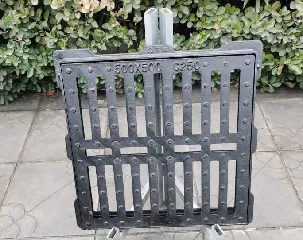gas pipe repair clamp
Understanding Gas Pipe Repair Clamps Importance, Types, and Usage
Gas pipe repair clamps are essential tools in the maintenance and repair of gas pipelines. When gas pipes develop leaks or weak spots, timely intervention is crucial to prevent accidents, maintain safety, and ensure the continued supply of gas. This article delves into the significance of gas pipe repair clamps, the various types available, and the correct usage and installation procedures.
Importance of Gas Pipe Repair Clamps
Gas pipelines are critical infrastructures in homes and industries, delivering natural gas and other fuels for heating, cooking, and power generation. Due to their exposure to various environmental factors, mechanical stress, and aging, these pipes can suffer from corrosion, wear, and leaks. The consequences of ignoring a gas leak can be catastrophic, leading to explosions, environmental hazards, and significant financial losses.
Gas pipe repair clamps provide a quick and effective solution for sealing leaks or reinforcing weakened sections of pipes without the need for complete replacement. By using repair clamps, technicians can address issues promptly, reducing downtime and minimizing safety risks.
Types of Gas Pipe Repair Clamps
There are several types of gas pipe repair clamps, each designed for specific situations and pipe materials. The most common types include
1. Steel Repair Clamps These clamps are made from high-strength steel and are ideal for repairing steel gas pipelines. They can withstand high pressure and provide a durable solution for severe leaks.
2. Plastic Repair Clamps Designed for use with plastic gas pipes, these clamps are lightweight and resistant to corrosion. They are suitable for minor repairs and can be easily installed.
3. Rubber-Coated Clamps These clamps have a rubberized coating to ensure a tight seal around the pipe. They are ideal for both metallic and non-metallic pipes and are often used in situations where additional protection against corrosion is required.
4. Universal Repair Clamps These clamps can be used on a variety of pipe materials, making them versatile options for emergency repairs. They come with adjustable features to fit different pipe sizes.
gas pipe repair clamp

Usage and Installation
The installation of a gas pipe repair clamp must be performed with caution to ensure safety and effectiveness. Here are the steps typically involved in the installation process
1. Identify the Leak Before applying a repair clamp, it's crucial to identify the exact location of the leak. This may involve using leak detection tools or conducting a thorough visual inspection.
2. Prepare the Pipe Clean the area around the leak to remove any dirt, rust, or debris. This ensures that the clamp adheres properly to the pipe surface.
3. Select the Right Clamp Choose a repair clamp suitable for the pipe material and the size of the leak. Using the correct clamp minimizes the risk of future leaks.
4. Position the Clamp Place the clamp over the damaged section of the pipe. Ensure that it covers the entire area of the leak and is centered correctly.
5. Tighten the Clamp Use the appropriate tools to tighten the clamp securely. Over-tightening can cause damage to the pipe, while under-tightening may lead to ineffective sealing.
6. Test for Leaks After installation, turn the gas back on and conduct a thorough inspection for any signs of leaks. This can involve using a soap solution or specialized leak detection equipment.
Conclusion
Gas pipe repair clamps are invaluable resources in maintaining the integrity of gas pipelines. With their ability to provide quick and effective solutions for leaks, they play a significant role in ensuring safety and operational efficiency. By understanding the different types of repair clamps and following proper installation procedures, technicians can effectively manage gas pipeline issues, thereby protecting both lives and property. Regular inspections and timely repairs using gas pipe repair clamps are essential practices for any organization that relies on natural gas or other gas fuels.
-
The Smarter Choice for Pedestrian AreasNewsJun.30,2025
-
The Gold Standard in Round Drain CoversNewsJun.30,2025
-
The Gold Standard in Manhole Cover SystemsNewsJun.30,2025
-
Superior Drainage Solutions with Premium Gully GratesNewsJun.30,2025
-
Superior Drainage Solutions for Global InfrastructureNewsJun.30,2025
-
Square Manhole Solutions for Modern InfrastructureNewsJun.30,2025
-
Premium Manhole Covers for Modern InfrastructureNewsJun.30,2025
